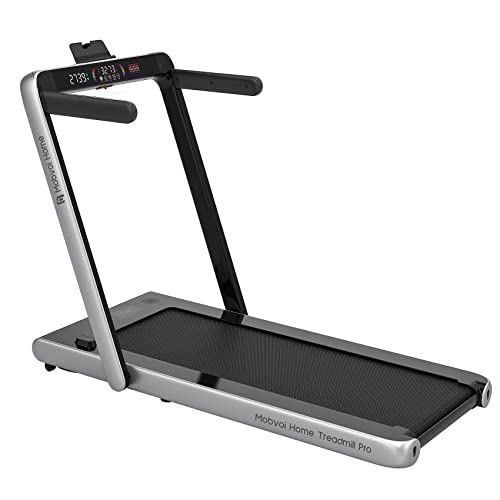The Rise of Non-Powered Treadmills: A Deep Dive into Their Benefits and Features
In a world increasingly concentrated on health, health, and fitness, the alternatives for workout equipment seem endless. Amongst these, non-powered treadmills are gaining significant traction. These machines, which do not depend on electrical power to operate, use a distinct mix of advantages and advantages that cater to a diverse audience. This post explores the features, benefits, and considerations related to non-powered treadmills, while likewise addressing typical concerns surrounding them.
What is a Non-Powered Treadmill?
A non-powered treadmill, often described as a manual treadmill, is a type of treadmill that is run by the user's motion instead of an electric motor. Users power the belt forward by walking or running, making it a flexible option for cardio exercises. Non-powered treadmills are typically seen in home health clubs, physical fitness studios, and rehabilitation centers due to their simpleness and efficiency.
Contrast: Non-Powered vs. Powered Treadmills
To understand the growing popularity of non-powered treadmills, it's vital to compare them against their powered equivalents. The table below highlights some essential differences:
| Feature | Non-Powered Treadmill | Powered Treadmill |
|---|---|---|
| Power Source | Manual (user-driven) | Electric (motor-driven) |
| Cost | Generally more budget-friendly | Typically more costly |
| Upkeep | Low maintenance needs | Higher upkeep requirements |
| Area Requirements | Normally less large | Can be big and heavy |
| Incline Adjustment | Manual adjustments | Automatic settings available |
| Workout Intensity | Variable; depends upon user effort | Constant; speeds set by the user |
| Threat of Injury | Lower, promotes natural motion | Higher, due to speed settings |
Training Benefits of Non-Powered Treadmills
- Engagement of Core Muscles: Non-powered treadmills require a greater level of balance and core engagement. Users must support themselves, which in turn integrates core strength into the workout.
- Natural Running Mechanics: As users propel the tread, they mimic natural running or walking strategies, minimizing the threats of injury connected with busy powered treadmills.
- Adjustable Speed and Intensity: Because the treadmill relies on user effort, people can choose their exercise speed, making it ideal for both beginners and advanced athletes.
- Increased Caloric Burn: Research suggests that users may burn more calories on a non-powered treadmill compared to a powered one at similar strengths. Walking Treadmill ? Manual treadmills can press the body to work more difficult and to maintain a greater level of intensity throughout the exercise.
- Toughness: Non-powered treadmills are normally more rugged and built to last, with less electronic components that may stop working gradually.
Considerations for Choosing a Non-Powered Treadmill
Before purchasing, possible purchasers must think about the following functions:
| Feature | Factors to consider |
|---|---|
| Weight Limit | Guarantee it suits your body type and requires |
| Belt Size | A wider belt can supply more convenience, particularly for running |
| Incline Settings | Look for choices to change incline for differing exercise intensity |
| Frame Construction | Choose long lasting materials that can stand up to rigorous use |
| Portability | Consider designs that are simple to move or save out of the method |
Regularly Asked Questions (FAQ)
1. Are non-powered treadmills suitable for everyone?Yes, these treadmills are usually appropriate for users of all physical fitness levels. Nevertheless, people with particular health issues need to seek advice from a medical expert before beginning any brand-new exercise program.
2. Just how much do non-powered treadmills cost?Prices can vary extensively, generally varying from ₤ 200 to upwards of ₤ 2,000 based on quality and features. Manual alternatives tend to be more budget friendly than powered versions.
3. How do I keep a non-powered treadmill?Maintenance tends to be minimal; simply ensure that the belt is clean and inspect for wear and tear sometimes. It's also crucial to keep moving parts lubricated for smooth operation.
4. Can I run or stroll on a non-powered treadmill?Yes, non-powered treadmills are created for both walking and running. Users can change their exercise intensity based upon speed and stride.
5. Do I need to adjust the incline manually?Yes, a lot of non-powered treadmills require manual modifications for incline modifications, allowing users to vary their workouts as preferred.
The non-powered treadmill stands as a practical and effective exercise option, best for those seeking to improve their workout routine without the intricacies of powered makers. By supplying a rigorous workout that engages the core and works the body holistically, these treadmills are designed to create a reliable cardio experience that caters to all physical fitness levels. Their price, sturdiness, and general effectiveness for calorie burning add to their rise in popularity.
Whether you are an experienced athlete trying to find a harder exercise or a novice taking those primary steps toward physical fitness, non-powered treadmills provide an inviting option to the conventional electric treadmill. With the added benefit of lower upkeep and expense, they should have consideration on your physical fitness journey.

